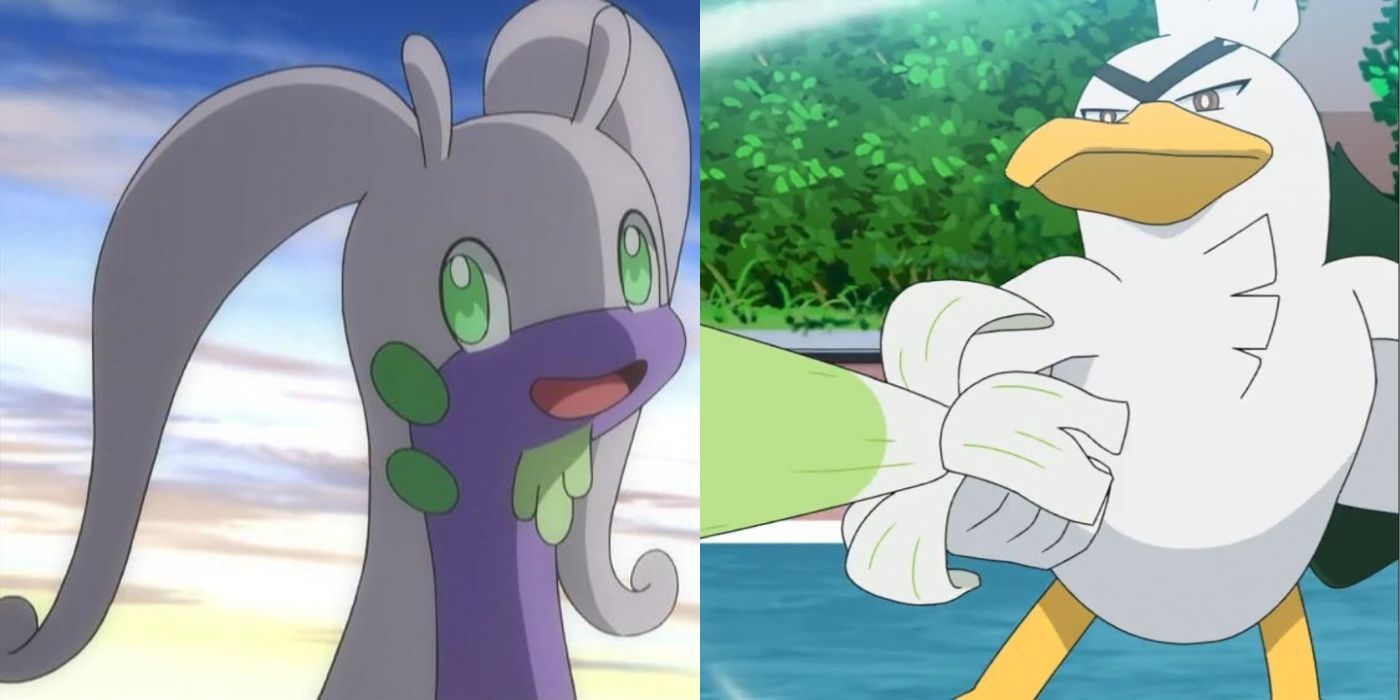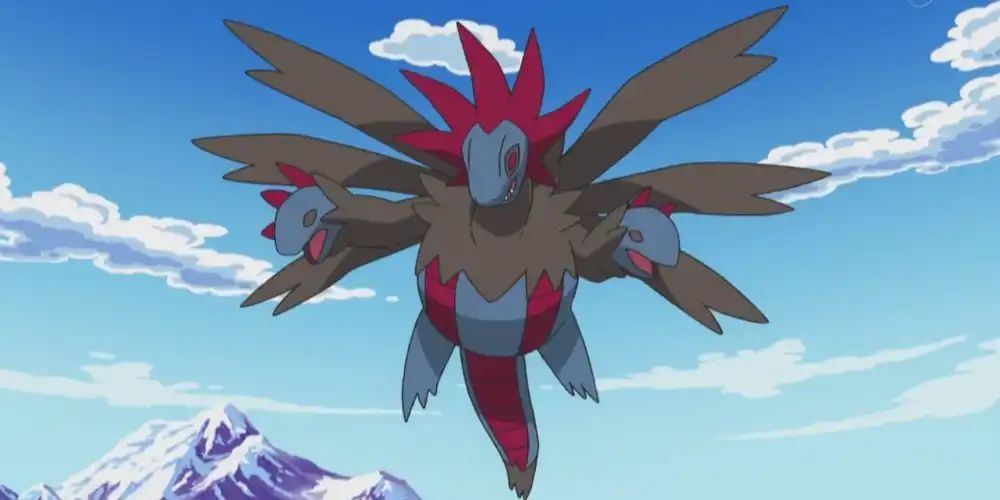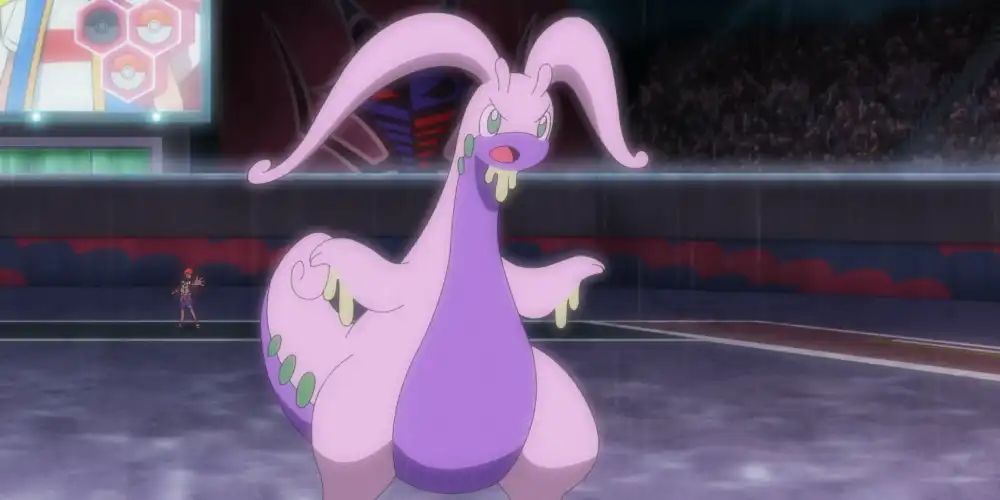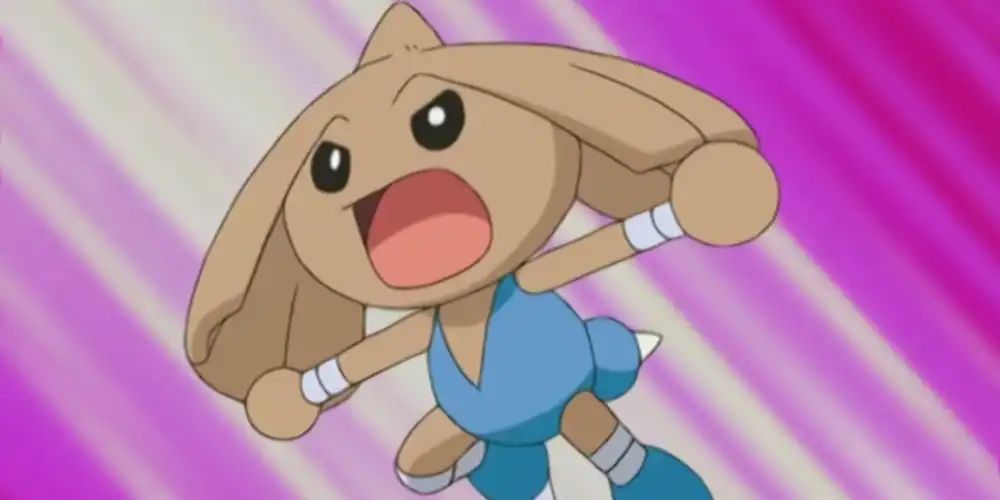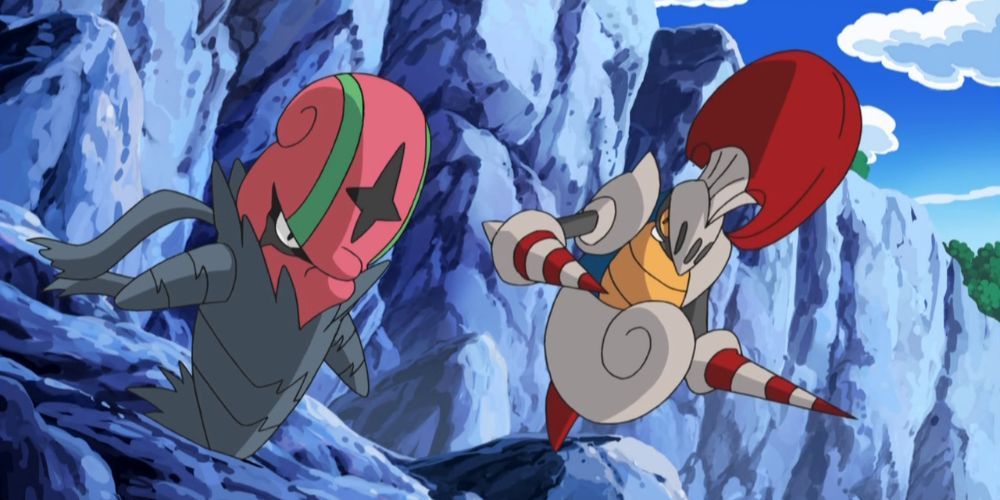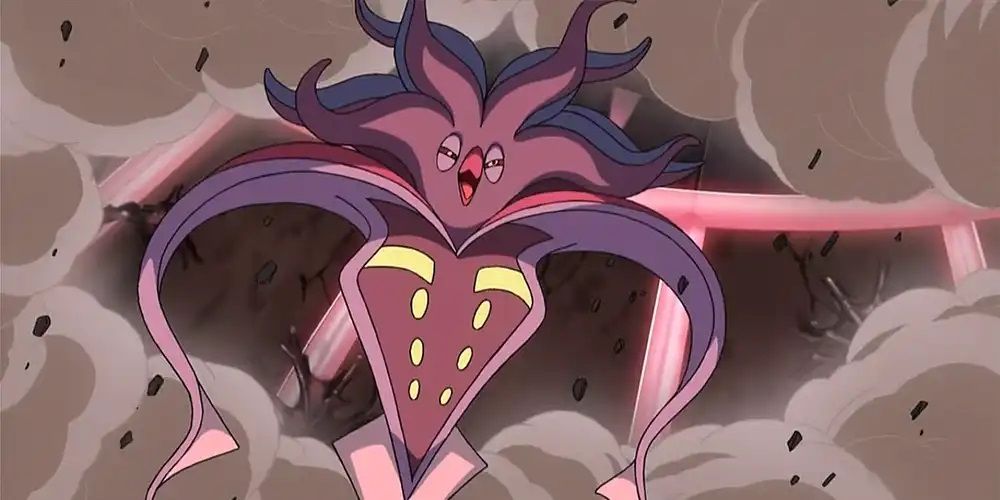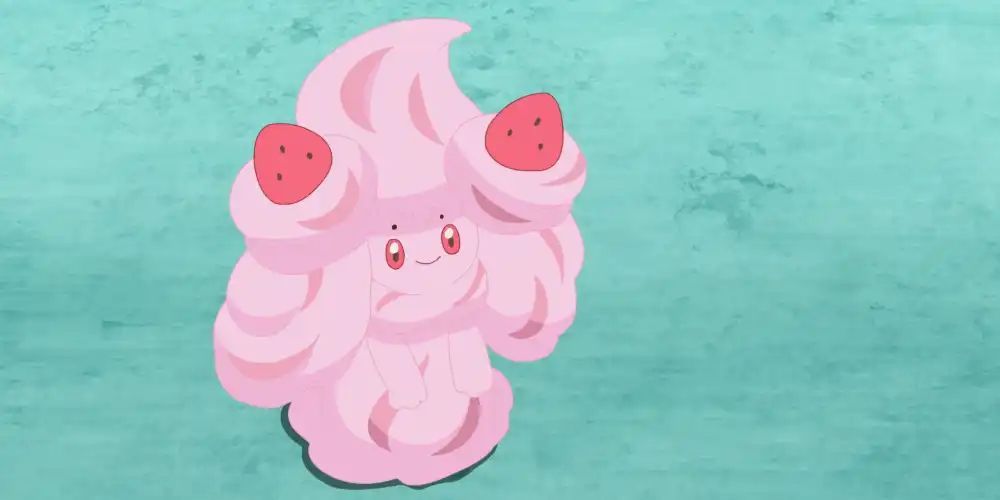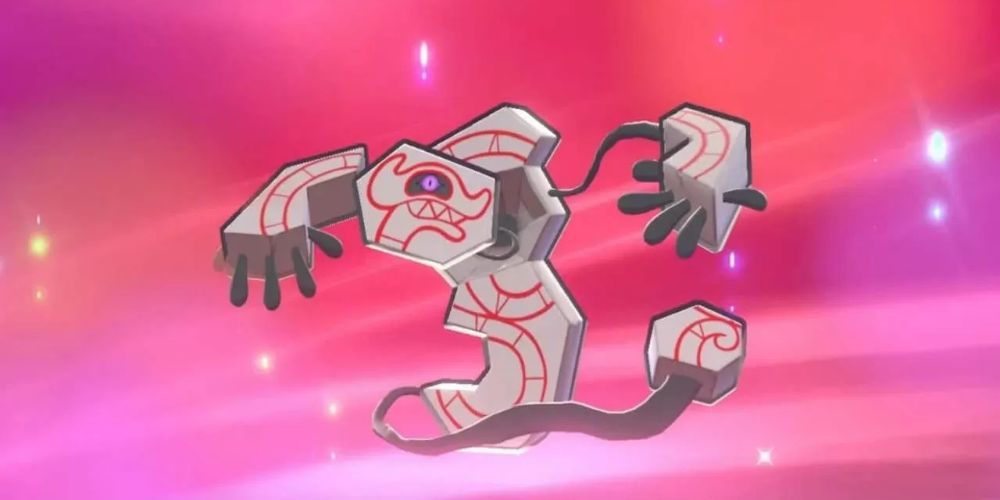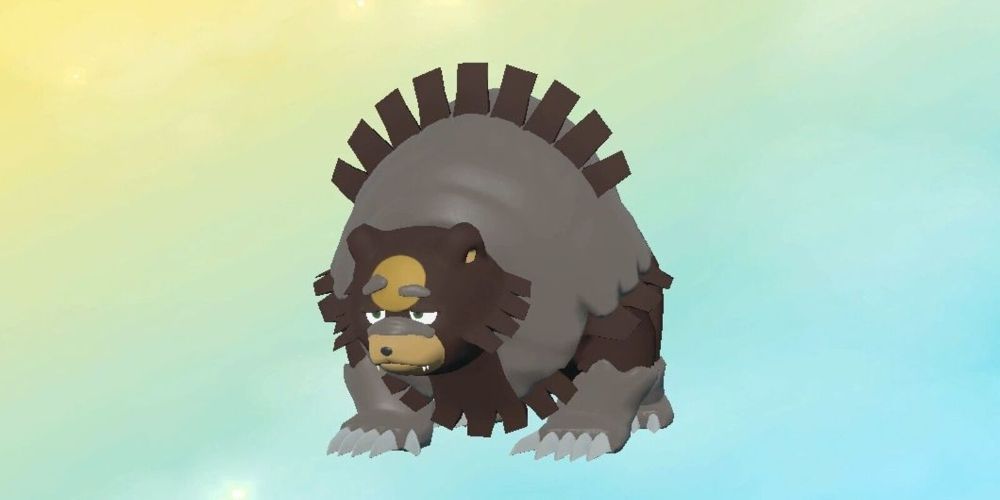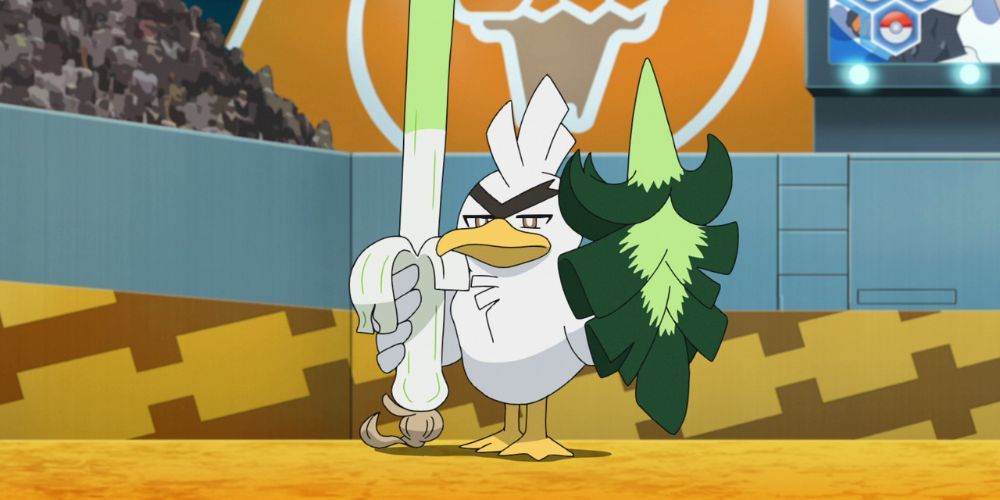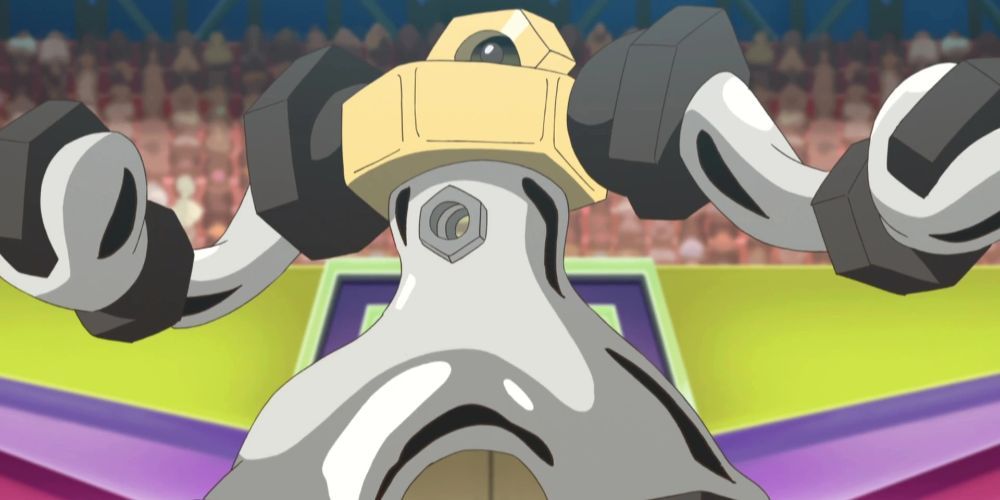Evolution is one of the core mechanics of the Pokémon franchise. With the help of a human partner, Pokémon can transform into new forms which grant them access to greater strength. Along with adding an air of mystery about what a Pokémon's evolved form looks like, it serves as a physical representation of the growth the trainer and their Pokémon go through.
However, not all Pokémon evolve in the traditional way. Some require things like special items or a strong friendship with their trainer, while others need to be traded. Some Pokémon have very specific scenarios required to trigger their evolutions, and while the results are usually worth it, the journey to these final forms can really test a trainer's commitment.
Hydreigon
This three-headed Dark and Dragon-type Pokémon is one of nine psudo-legendary Pokémon, named for their power being just below legendaries. Known as the Brutal Pokémon, Hydreigon evolves from the blind Deino and Zweilous, so it lashes out at anything that moves due to sensory overload. If a trainer can calm it down, this fury can be directed to steamroll opponents thanks to its raw power.
Unfortunately, the journey to Hydreigon ends at level 64, is the longest out of all Pokémon who evolve through battle experience. All Dragon-Types acquire experience slower than other species, but by the time most dragons are in their final form, trainers will have only just gotten to Zweilous. As such, Hydreigon is almost never seen in teams challenging the Pokémon League.
Goodra
The psudo-legendary of the France inspired Kalos region, Goodra is a slug-like dragon known for its bountiful affection towards its trainer. Unlike most dragons, Goodra is built to be more defensive in nature and is able to shrug off most attacks with ease before retaliating with its own. In the Hisuian region, a Steel-type subspecies exists with a shell, increasing its defensive capabilities even further.
Both Goodra only evolve from Sliggoo during rain or fog. However, the weather must be naturally occurring, not created by a Pokémon using Rain Dance or with the Drizzle ability. This can force a Sliggoo trainer to wait for an ideal weather condition, which just adds onto the wait between Goomy, one of the weakest dragons, to Sliggoo.
Hitmontop
Despite being classified as a Baby Pokémon, the Fighting-type Tyrogue is anything but helpless. These young martial artists train every day against powerful opponents in order to master one of three different fighting styles to trigger their evolution into Hitmonlee, Hitmonchan, and Hitmontop. The latter of this trio, known for its Capoeira fighting-style, is by far the most difficult to achieve.
To evolve into Hitmontop, a Tyrogue must be trained so that its attack and defense stats are equal. There is a lot of symbolism behind this: it can represent how a top must be perfectly balanced in order to spin, and how Capoeira is equal parts a martial art and dance. However, trainers will need to put a lot of work into this equilibrium, since each individual Pokémon has unique traits called Individual Values that affect their stats at birth.
Accelgor & Escavalier
In the American-inspired Unova region, two Bug-type Pokémon named Shelmet and Karrablast live in the marshlands. Normally they are predator and prey: Karrablast track down Shelmet and use an acidic liquid to melt their shells and eat the insides. What neither realizes is that, if they put aside their grievances and work together, they can help one another to evolve.
Trainers can aid in this process by trading Shelmet and Karrablast with one another. The electrical stimulation causes Shelmet to abandon its shell and evolve into the speedy Accelgor, while Karrablast uses the discarded shell as armour to become the Steel-type Escavalier. As the only Pokémon who require specific partners for trading, evolving them takes some coordination, but the evolutions are worth it.
Malamar
A Dark and Psychic-type, Malamar is said to possess the strongest hypnotic powers of all Psychic-types. Wild Malamar use this power to lure prey towards them or to acquire servants, but humans have been able to use their Malamar to influence major events in the Pokémon world. For those with less nefarious goals, Malamar can prove a loyal battle partner, especially thanks to its Contrary ability, which reverses the effect of stat boosting and lowering moves.
Evolving an Inkay into Malamar is a simple affair, but not immediately clear. Inkay must be turned upside-down to trigger its evolution, which is done by turning the game consul upside down upon leveling up. While this is hinted at in Malamar's inverse cephalopod design, it can still baffle new trainers, especially since no other Pokémon uses this method.
Alcremie
Found in the United Kingdom-inspired Galar region, Milcery is an all-female Fairy-type Pokémon made of living cream. She is highly sought after by bakeries, who believe her presence will bring them good fortune. When she evolves into Alcremie, she enjoys treating trainers who earn her trust to treats of berries and cream.
Evolving Milcery to Alcreamie is simple: give it a Sweet item to hold and then spin it in place. The challenge comes from customization options, as there are seven different sweets, and the spinning process results in nine different flavours based on time of day, and the direction of the spin, and time spent spinning. This means there are 70 different types of Alcreamie combinations.
Runerigus
First appearing in the ruins of the Unovan desert, the Ghost-type Yamask was said to be created from the spirits of ancient humans, and carried around masks that represented their faces. In Galar, a subspecies of Yamask exists that carries around a broken fragment of a clay tablet. Over time, the Yamask merges with other fragments and becomes the haunted rune stone, Runerigus.
As frightening as Runerigus is, the process of claiming one is tedious and confusing. First, a Yamask must suffer at least 49 points of damage in a fight without being knocked out, and then it must be taken underneath a special stone bridge located in Galar's Wild Area. The process is reminiscent of a funeral precession to an ancient burial sight, which is thematically brilliant with Runerigus' runestone inspiration, but confusing, especially since the stone-bridge is unmarked.
Ursaluna
The ancient Hisuian region brought with it many evolutions to Pokémon who previously did not have one. Most of them have strange evolution methods, but they are mainly involve using specific moves multiple times. That can't be said for Ursaluna, the evolved form for the Normal-type Ursaring, and the only Hisuian evolution given to a previously fully-evolved Pokémon.
The first step to gaining an Ursaluna of your own is to find a Peat Block, a special item that can only be found randomly buried around Hisui. After digging one up, it must be given to Ursaring at night while a full moon is in the sky. Though a time-consuming method, the results are worth it for Ursaluna's power and new Ground-typing.
Sirfetch'd
An underdog of the original 151, Farfetch'd is a leek-wielding duck that tastes deliciously, causing its population to plummet. In Galar, Farfetch'd avoided hunting by training to become skilled warriors, replacing their Normal and Flying-type for pure Fighting-type. The best among them can even evolve into the chivalrous sword and shield wielding Sirfetch'd.
Aquiring a Sirfetch'd requires a Galarian Farfetch'd to fight triumph against impossible odds and score three critical hits in a single battle. There are several ways to do this, such as giving Farfetch'd a Leek-item to hold, which boosts their critical hit ratio. However, it still needs to fight an opponent who can withstand its attacks until it lands a crit, which are a dice-roll with every attack.
Melmetal
The Steel-type Meltan became the first Pokémon released exclusively in the mobile game, Pokémon GO. They live in large groups and eat metal until the strongest forces them all to merge together into Melmetal. Said to be able to create iron from nothing, when Melmetal's life comes to an end, its body rusts and falls apart, which gives birth to new Meltan.
Evolving Melmetal is a difficult process, and one that can only be achieved through Pokémon GO. To mimic a Melmetal colony, trainers must acquire 400 Meltan candies in order to evolve one of them into Melmetal. This is an arduous process that requires days of walking with a partner to collect candy, and results in a durable legendary Pokémon.

